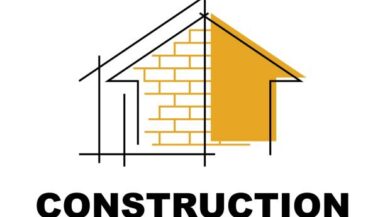Introduction
In the realm of construction, framing plays a pivotal role in shaping the stability and strength of any building. The process involves creating the supportive skeleton that forms the structure’s backbone, ensuring it can withstand the test of time and natural forces. This article will delve into the world of framing construction, exploring its significance, various types, materials used, and best practices. By the end, you will have a comprehensive understanding of how framing lays the foundation for sturdy and reliable buildings.
1. Understanding Framing Construction
1.1 What is Framing?
Framing, in construction, refers to the assembly of structural elements that form the framework of a building. It provides support, distributes loads, and determines the shape and layout of the structure.
1.2 The Importance of Solid Framing
A strong and well-built frame is essential to ensure a building’s longevity and structural integrity. Proper framing not only supports the weight of walls, roofs, and floors but also safeguards against potential damages caused by external forces like earthquakes and heavy winds.
2. Types of Framing
2.1 Wood Framing
Wood framing is the most common and traditional method used in residential construction. It offers versatility, cost-effectiveness, and ease of installation.
2.2 Steel Framing
Steel framing is prevalent in commercial and industrial projects. It provides superior strength and durability and is resistant to pests and fire.
2.3 Concrete Framing
Concrete framing, known as reinforced concrete, is renowned for its robustness and ability to handle heavy loads. It is often used in high-rise buildings and structures requiring immense strength.
3. Framing Materials
3.1 Lumber
Lumber is the primary material used in wood framing. Different grades and types of lumber are available, such as dimensional lumber and engineered lumber.
3.2 Steel Beams
Steel beams offer exceptional tensile strength and are used in steel framing to support heavy loads and provide stability.
3.3 Concrete Blocks
Concrete blocks are utilized in concrete framing to form the load-bearing walls, offering resilience and fire resistance.
4. The Framing Process
4.1 Design and Planning
Before the actual construction begins, architects and engineers collaborate to create a detailed framing plan, considering factors like load distribution, building codes, and material specifications.
4.2 Foundation and Base Framing
The first step involves constructing the foundation and base framing. It lays the groundwork for the rest of the framing process.
4.3 Wall Framing
Wall framing is the assembly of vertical studs, plates, and headers, forming the exterior and interior walls of the building.
4.4 Roof Framing
Roof framing includes creating the structure that supports the roof, such as rafters, trusses, and sheathing.
4.5 Floor Framing
Floor framing comprises joists, beams, and subflooring, establishing the building’s floors and supporting the weight of the occupants and furniture.
5. Best Practices in Framing
5.1 Accurate Measurements and Cuts
Precise measurements and cuts are crucial to ensure the framing pieces fit together seamlessly, preventing potential weaknesses.
5.2 Proper Fastening Techniques
Using appropriate nails, screws, and brackets to connect framing elements ensures stability and prevents structural issues.
5.3 Regular Inspections
Periodic inspections during the framing process help identify and rectify any errors or deviations early on.
Conclusion
In conclusion, framing construction is the backbone of any building project. It lays the groundwork for a strong, durable, and safe structure that can withstand the test of time and various environmental forces. Whether it’s wood, steel, or concrete framing, each method has its merits, offering unique benefits for different types of constructions. By adhering to best practices and meticulous planning, construction professionals can create remarkable buildings that stand tall for generations to come.




Leave a reply